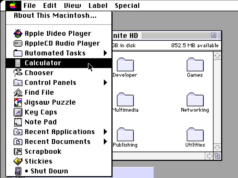
Current job seekers have access to an unprecedented array of programs, platforms, and other online tools designed to make the tedious and time-consuming task of finding employment a little easier. Unfortunately, knowing how and when to use them isn’t always straightforward.
Take LinkedIn’s “Open to Work” feature, for example. Starting in 2020, the platform’s users have been able to add a green frame to their profile photo reading “#OPENTOWORK,” and are given the option of either making it visible to anyone who looks at their profile, or only to recruiters.
In the years since, some big opinions have emerged about what is, at least appearance-wise, a relatively small aspect of a job-seeker’s LinkedIn profile—including from career experts who encourage people to use it, and others who advise against it, claiming it makes people look desperate. Of course, it’s more complicated than always embracing or avoiding the optional profile photo frame. Here are some of the pros and cons of using LinkedIn’s “Open to Work” feature to help you navigate the conflicting advice.
What’s the purpose of LinkedIn’s ‘Open to Work’ feature?
Given that the social media platform’s website describes the company as the “world’s largest professional network on the internet,” it’s easy to see where the “Open to Work” feature (shown below on a sample profile) fits in. If users want to utilize their professional connections to find work, the green banner lets them—as well as any recruiters who happen to come across your profile—know you’re looking for something new. Plus, having the option of limiting the banner’s visibility to recruiters allows people to jumpstart their job search before making it public.

Credit: Courtesy of LinkedIn
Why is the ‘Open to Work’ feature controversial?
The debate over whether or not to use the “Open to Work” banner has been around as long as the feature itself. The general gist is that while some career advisors and recruiters see this profile addition as beneficial—or at least as something that shouldn’t hurt job seekers—for the reasons outlined above, other recruiters have indicated that the banners can do more harm than good, based on their own assumption that anyone publicly advertising their job search must not be top-tier talent.
A few years of hot takes later, the “Open to Work” feature wasn’t necessarily top-of-mind for recruiters or job seekers; that is, until October 2023, when Nolan Church, a former Google recruiter and current CEO of Continuum, weighed in. In an interview with CNBC, Church calls the “Open to Work” banner “the biggest red flag on LinkedIn,” noting that it can feel “like desperation” to a hiring manager, and reigniting the debate over the use of this job search tool.
How many people use the ‘Open to Work’ feature?
When I contacted a rep for LinkedIn about the ongoing controversy surrounding the “Open to Work” feature, the company opted not to comment on the criticism directly, but did respond to some of my questions about its use. According to Suzi Owens, senior director of product communications for LinkedIn, approximately 33 million LinkedIn users—out of the more than one billion members worldwide—are actively using the “Open to Work” feature publicly right now.
With so many variables involved, it’s difficult to measure the extent to which adding the profile photo frame has helped or harmed people looking for jobs, though LinkedIn data suggests that it can lead to an increase in messages. “Members using the #OpenToWork photo frame publicly are, on average, 40 percent more likely to receive InMails from recruiters, and 20 percent more likely to receive messages from the LinkedIn community,” Owens said in an emailed statement.
But what do actual recruiters, hiring managers, and career experts think about announcing that you’re #OpenToWork?
Is using LinkedIn’s ‘Open to Work’ feature helpful or harmful?
Because one-size-fit-all career advice doesn’t really exist, it’s up to you to determine whether to label yourself as being “Open to Work.” But to make that decision easier, here are some of the potential pros and cons to consider before adding the banner to your profile photo.
The pros
First, let’s talk about how using this tool could benefit your job search:
It shows you’re serious. When Scott Lieberman, the founder of Touchdown Money, sees the “Open to Work” banner on someone’s LinkedIn profile photo, he knows that person is serious about finding a new position. “They’re not casually browsing the job market or simply keeping their interviewing skills fresh,” says Lieberman, who has more than a decade of experience on HR hiring committees. Rob Hourie, a staffing specialist at Elwood Roberts, agrees. “So many people will waste your time trying to get an offer, only to use it with their current employer to get more money,” he says. “The badge says ‘I am moving.’”
Increased visibility. Adding the “Open to Work” banner to your LinkedIn photo can make recruiters’ jobs easier, providing them with a visual signal to check out your profile as they’re scrolling through potential candidates for a position. It makes you quickly identifiable as someone who is open to considering new roles, says Matthew Warzel, the president of MJW Careers, who has more than 15 years of experience in recruitment, outplacement, and career coaching.
It can speed things up. Because the “Open to Work” badge is a clear, immediate signal that someone is ready to leave their current job, it can potentially accelerate your job search, says Mark McShane, the chief recruiting officer and managing director of AED Training. “More visibility means faster hiring—getting us in touch with a candidate before they get placed before us,” he says. “For the sectors with talent shortages, this is huge: It gives us access to an immediate and willing-to-work pool of candidates. The people looking for a job are letting a professional network know that they are available, while hiring managers get exposure to workforce fluidity. It’s a win-win.”
Access to unadvertised jobs. Many job listings aren’t posted publicly—at least at first. When you indicate that you’re “Open to Work,” and recruiters turn to LinkedIn to find candidates to fill that role, you may be putting yourself in the running for an opportunity you didn’t know existed, Warzel says.
Community support. When job seekers add the “Open to Work” banner to their profile photo and make it visible to the public, they may get an unexpected boost of support and advice from their LinkedIn network. “The environment encourages those from all backgrounds and sectors to comment and message any potential vacancies that could help a candidate,” says Charlotte Grant, a senior recruitment consultant for The Recruitment Group.
The cons
And now, a few examples of the reasons why your profile might be better without the banner:
The stigma. Whether it’s warranted or not, many recruiters agree with Church’s “red flag” assessment. “Some employers may perceive ‘Open to Work’ as a sign of desperation, leading to unconscious bias,” Grant says. According to McShane, that’s because adding the green banner to your profile photo exposes you to a specific stigma: actively searching for a job. “There’s no hard data around stigma’s effect on hiring stats, but it’s so prevalent in the industry,” he says. Although the bias is often unfounded, McShane says that using the feature could cloud a hiring manager’s perception of a candidate—causing them to question whether they’re under-compensated at their current job, or struggling to maintain employment.
Potential for problems at your current job. People who are already employed and opt to add a publicly visible “Open to Work” banner to their profile photo run the risk of someone at their current job spotting it. Though there could be situations where that ultimately works to someone’s advantage—for instance, a manager offering a raise to an employee they want to retain—it could also result in an awkward and uncomfortable situation, McShane says. Or, as Hourie puts it, “If neither your customers nor employer are aware you’re considering a move, it can bring instability, and also shows a lack of loyalty.” Meanwhile, if you’re only after a new offer to use as leverage for a raise at your current job, and your employer figures out what you’re up to, it could seriously limit your negotiation power, says Melissa Terry, the HR manager for VEM Tooling.
Unwanted attention. Sure, publicly identifying yourself as being #OpenToWork may make you 20 percent more likely to receive messages from the LinkedIn community—but how many of those messages do you actually want? “The badge might attract a deluge of spammy messages or irrelevant connections,” Warzel says. “Sorting through these can be time-consuming and detract from your focused job search. Be prepared to manage this influx efficiently.”
Overexposure. According to Warzel, the feature can become less effective over time. “After an initial surge, recruiters might move on to newer ‘Open to Work’ profiles,” he says. “Use it strategically and consider removing it after a set period.”
When to use the ‘Open to Work’ feature
In addition to the general pros and cons, you should also consider your specific job search—like the types of roles you’re seeking, your industry, and your level of employment seniority—when deciding whether to use the “Open to Work” feature, including when to make it visible only to recruiters.
When to make your ‘Open to Work’ banner visible to recruiters only
As discussed above, publicly announcing that you’re #OpenToWork on LinkedIn can produce a range of both positive and negative results. For this reason, many recruiters recommend adding the green frame to your profile photo, but adjusting the setting so that it’s only visible to recruiters.
The most obvious reason to go this route is to avoid signaling to your current employer that you might leave. “This is especially helpful if you like your job, but just want to passively explore what else is out there,” Warzel says. “Recruiters can still find you, but bosses and coworkers won’t get a hint.” McShane calls the setting “a strategic compromise,” and explains that as a recruiter, a candidate’s decision to use it doesn’t impact his perception of them. “It just privately lets me know that you’d at least consider work,” he says.
When it makes sense to use LinkedIn’s ‘Open to Work’ feature
Generally speaking, job seekers in these categories stand to benefit the most from identifying themselves as being #OpenToWork:
Tech industry. The fast-paced nature of the tech industry means there’s a constant need for new employees with specialized skill sets. “Hiring needs evolve quickly, so staying visible to tech recruiters is vital,” Warzel says. This also applies to other rapidly evolving sectors, like digital marketing and renewable energy, “where innovation and proactive career advancement are valued,” says Ben Richardson, the founder and director of Acuity Training. Indicating that you’re “Open to Work” signals “a readiness to embrace new challenges and opportunities,” he adds.
Healthcare industry. According to the U.S. Bureau of Labor Statistics, between 2022 and 2032, employment in healthcare roles is projected to outpace the average growth of all other occupations. With so many new openings expected, clearly signaling your availability can help you quickly connect with recruiters who likely need to fill several roles at once, Warzel says.
High-turnover jobs. It’s also a useful tool in industries where there’s constant mass recruitment of staff and high turnover, like construction, retail, and service roles, says Ryan Carrigan, the founder and CEO of MoveBuddha, a moving startup where he also serves as the recruiter. “It can help recruiters get candidates without implementing the traditional recruitment process,” he says.
Early-career job seekers. People who don’t have lengthy resumes can pick up new skills through on-the-job training, Warzel says, and advertising that you’re #OpenToWork shows your willingness to learn.
Mid-career professionals. Recruiters judge potential by experience. “For mid-level positions, ‘Open to Work’ badges signal untapped talent that companies can attract without huge investments,” Warzel says.
Freelance, temporary, or contract roles. In fast-moving sectors like tech or creative industries where freelancing and project-based work are common, recruiters don’t want to spend a lot of time trying to fill temporary roles, says Rocky Vuong, the founder and owner of Calibre Cleaning. Using the “Open to Work” feature is “a quick way to signal availability without the need for constant networking,” he says.
When it may be better not to use the ‘Open to Work’ feature
Here are some examples of when you may want to think twice about identifying yourself as #OpenToWork, according to recruiters and hiring managers:
Financial sector. According to Hourie, people working within the financial sector—especially those who deal with the public—should avoid using the “Open to Work” feature. “Public opinion within a finance role is critical to a person’s reputation,” he says, so doing anything that could potentially jeopardize how people perceive you professionally is a risk.
Specialized occupations. Those with niche occupations—where the applicant pool is small, and people in the industry are more likely to know each other—advertising your availability may not be the best way to go about a job search, Warzel says.
Executives. Several recruiters mentioned that labeling yourself “Open to Work” is not a good look for executives, or those seeking senior leadership roles. “It’s a common perception that senior executives should be head-hunted, and having the badge active might display a sense of desperation,” Carrigan says. Similarly, Vuong says that using it could “undermine their perceived value by suggesting they are too readily available.”
Overqualified candidates. Along the same lines, someone open to working in roles far below their experience level can be a red flag for recruiters and hiring managers. No only will the self-demotion look suspicious, but it might lead employers to see the candidate as temporary, rather than invested, Warzel says.
During a lengthy job search. Even when there are clear advantages to using the “Open to Work” feature, leaving that banner on your profile photo for too long can have the opposite effect. So how long is too long? Lieberman suggests limiting it to around three months “because some potential employers may shy away from people who haven’t been able to land a job they want for that long.” Hourie recommends an even shorter stint: “If it doesn’t make people contact you within a month, or you are finding people are no longer messaging you—where they did before—take it off.”
At that point, you’ll probably want to reassess and tweak your profile, ensuring that you’re making it clear that you meet the needs of the roles you want. After some time away, and perhaps a new profile photo, you can always turn the feature back on. Keep in mind that this only one of the many tools at your disposal, and like the positions you’re seeking, it may take some trial-and-error to find one that works for you.








